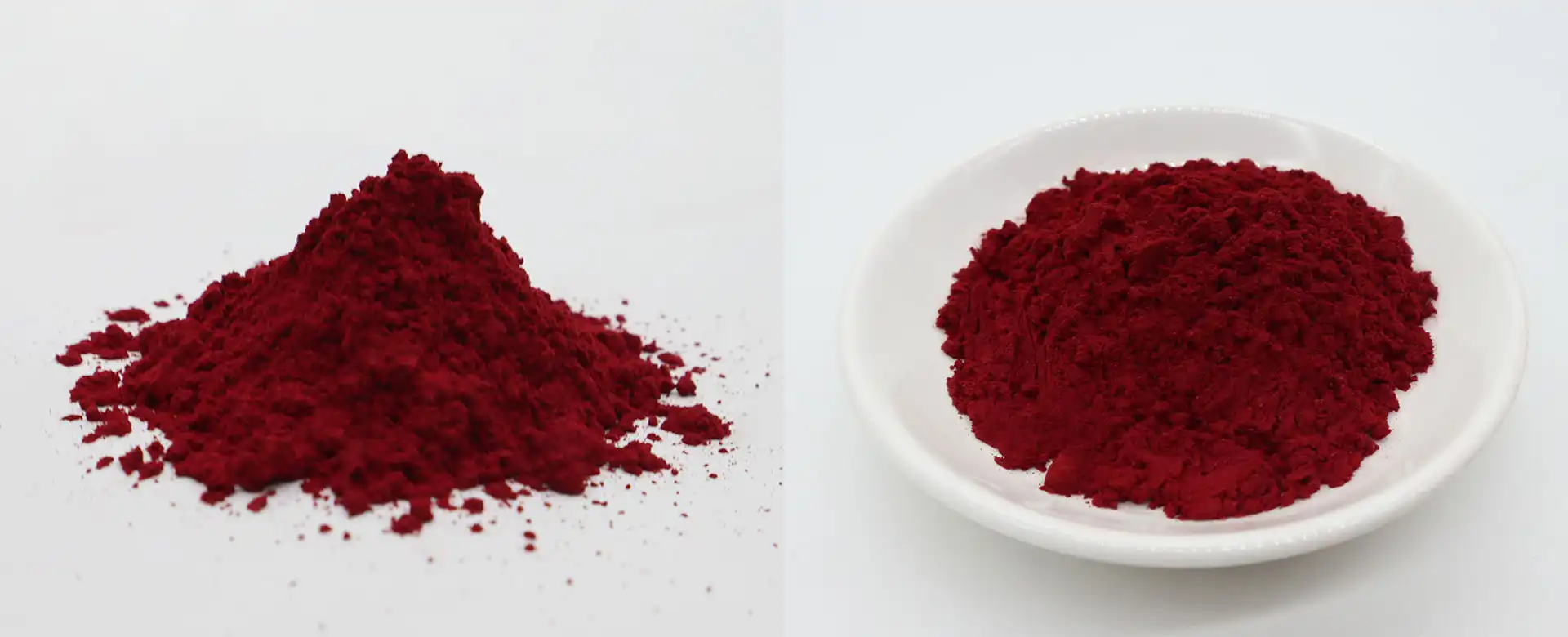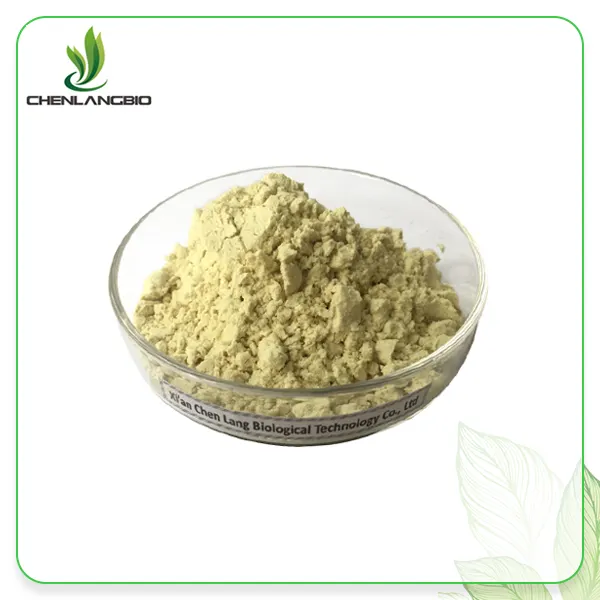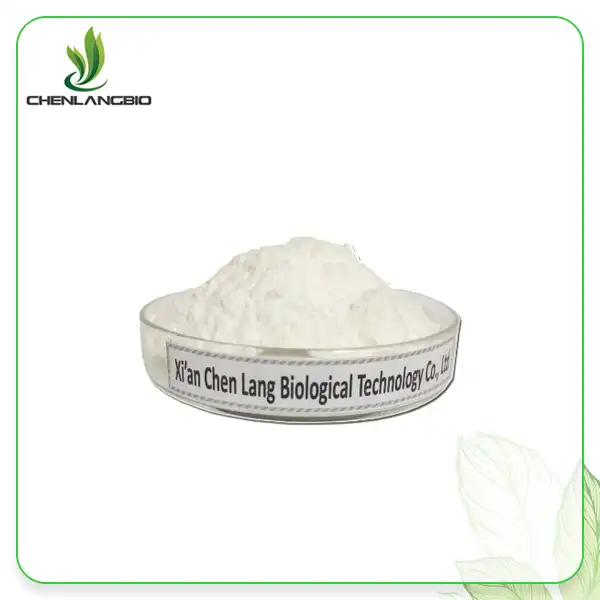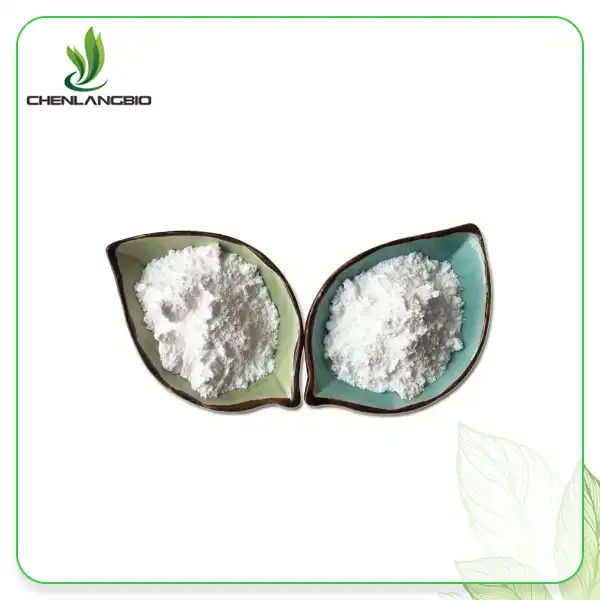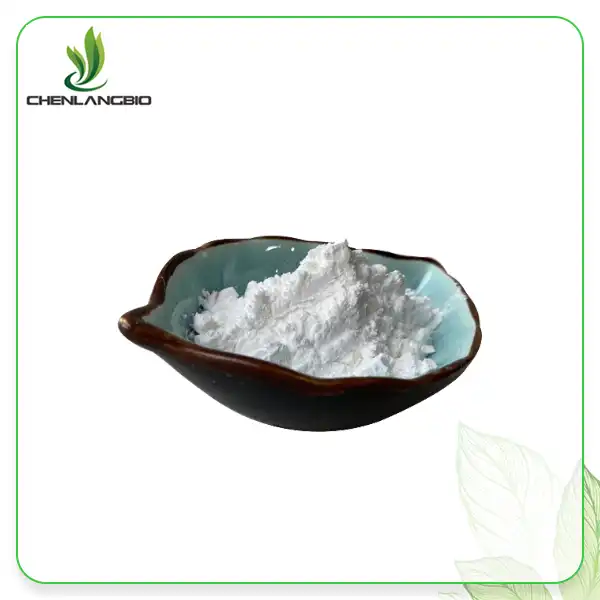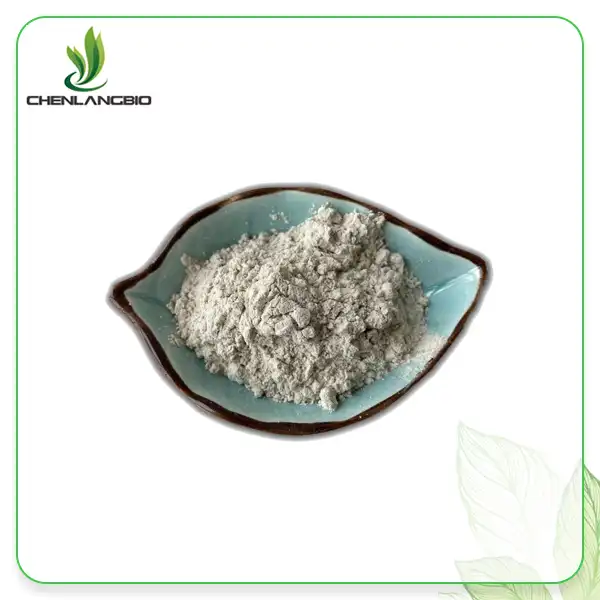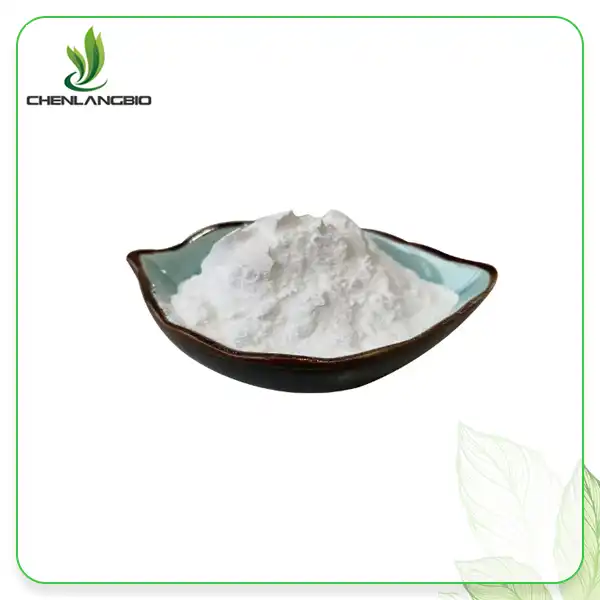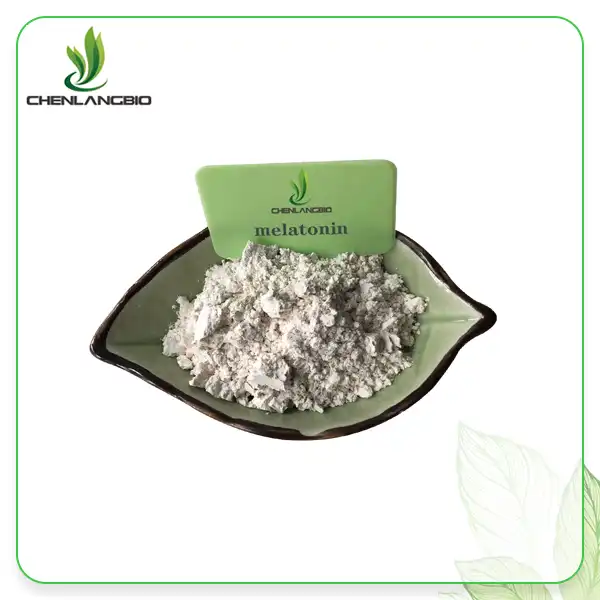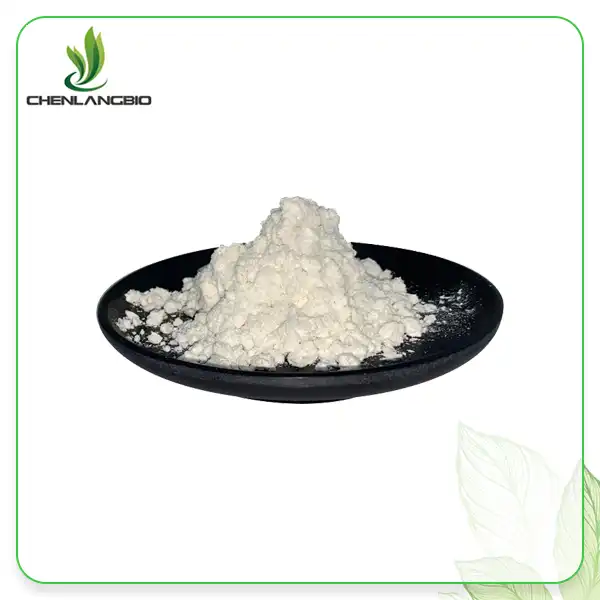Can PQQ be Combined with Other Supplements?
2025-04-03 08:13:13
Exploring the synergistic potential of pyrroloquinoline quinone (PQQ) with other dietary supplements has become a topic of growing interest in the health and wellness community. As a powerful compound known for its remarkable antioxidant properties, PQQ has gained significant attention for its ability to support mitochondrial function and overall cellular health. The question of whether PQQ can be effectively combined with other supplements is particularly relevant for those looking to optimize their supplementation regimen. Pyrroloquinoline Quinone, a naturally occurring redox cofactor, demonstrates compatibility with various other supplements, potentially enhancing overall health benefits when used in strategic combinations. Scientific evidence suggests that PQQ works synergistically with several compounds, particularly those that support mitochondrial health, antioxidant defense systems, and cognitive function, making it a valuable addition to comprehensive supplement protocols aimed at supporting energy production, neuroprotection, and longevity.
Optimal Supplement Combinations with PQQ
PQQ and Coenzyme Q10: A Powerful Mitochondrial Support Duo
Pyrroloquinoline Quinone and Coenzyme Q10 (CoQ10) represent one of the most beneficial supplement combinations for mitochondrial health optimization. Both compounds play crucial roles in the electron transport chain, which is essential for cellular energy production. While CoQ10 functions as an electron carrier in the mitochondrial membrane, PQQ works as a cofactor that can catalyze redox reactions and promote mitochondrial biogenesis—the creation of new mitochondria. This complementary action creates a synergistic effect that significantly enhances mitochondrial function beyond what either supplement could achieve alone. Research indicates that when these supplements are combined, they may provide enhanced protection against mitochondrial dysfunction, which is associated with aging and various degenerative conditions. The antioxidant capacity of Pyrroloquinoline Quinone, which exceeds that of traditional antioxidants like vitamins C and E, works alongside CoQ10's protective effects to shield mitochondria from oxidative damage. For individuals concerned with energy production, particularly those experiencing fatigue or age-related energy decline, this combination may be especially beneficial. The typical effective dosage for this combination includes 10-20mg of PQQ and 100-200mg of CoQ10 daily, though individual needs may vary based on health status and specific goals.
PQQ and B Vitamins: Enhancing Energy Metabolism
The combination of pyrroloquinoline quinone with B vitamins creates a comprehensive approach to supporting cellular energy metabolism. B vitamins, particularly B1 (thiamine), B2 (riboflavin), B3 (niacin), and B5 (pantothenic acid), are essential cofactors in various metabolic pathways involved in converting food into energy. When combined with PQQ, which enhances mitochondrial function and energy production at the cellular level, these nutrients work synergistically to optimize the body's energy-generating processes. Pyrroloquinoline Quinone's ability to support mitochondrial biogenesis complements the role of B vitamins in the Krebs cycle and electron transport chain, potentially leading to improved metabolic efficiency. This combination may be particularly beneficial for individuals experiencing fatigue, those with increased metabolic demands (such as athletes), or people recovering from illness. Additionally, both PQQ and certain B vitamins (particularly B12 and folate) have demonstrated neuroprotective properties, making this combination potentially valuable for cognitive health as well. Some research suggests that PQQ may enhance the bioavailability and effectiveness of B vitamins, increasing their uptake and utilization in the body. For optimal results, a comprehensive B-complex supplement containing all eight B vitamins in bioavailable forms, taken alongside 10-20mg of PQQ daily, provides a foundation for enhanced energy metabolism and neural function.
PQQ and Omega-3 Fatty Acids: Neuroprotective Synergy
The combination of Pyrroloquinoline Quinone with omega-3 fatty acids represents a powerful approach to supporting brain health and cognitive function. Omega-3 fatty acids, particularly EPA (eicosapentaenoic acid) and DHA (docosahexaenoic acid), are essential components of neural membranes and play crucial roles in maintaining neural plasticity and communication between brain cells. When combined with PQQ, which has been shown to stimulate nerve growth factor production and protect neurons from oxidative damage, this duo creates a comprehensive neuroprotective strategy. Pyrroloquinoline Quinone's ability to enhance mitochondrial function is particularly relevant to brain health, as the brain is one of the body's most energy-demanding organs. By improving energy production in neural cells while simultaneously supporting membrane integrity through omega-3 supplementation, this combination addresses multiple aspects of neurological health. Studies suggest that both PQQ and omega-3s have anti-inflammatory properties in the brain, potentially reducing neuroinflammation associated with cognitive decline and neurodegenerative conditions. The complementary mechanisms of these supplements may support improved memory, learning capacity, and overall cognitive resilience, particularly in aging populations. For those concerned with cognitive preservation and enhancement, combining 10-20mg of PQQ daily with 1-2 grams of high-quality omega-3 supplementation (providing at least 500mg combined EPA and DHA) may offer significant neuroprotective benefits over time.
Understanding PQQ's Interactions with Common Supplements
PQQ and Antioxidant Nutrients: Complementary Protection
Pyrroloquinoline Quinone functions as a remarkably potent antioxidant with unique properties that complement other antioxidant nutrients to create a more comprehensive cellular protection system. Unlike many traditional antioxidants that are depleted after neutralizing a single free radical, PQQ can undergo thousands of redox cycles, continuously regenerating itself to provide sustained antioxidant activity. When combined with other antioxidants like vitamin C, vitamin E, glutathione, and flavonoids, PQQ contributes to a more robust defense against oxidative stress. Each antioxidant tends to concentrate in different cellular compartments and neutralize different types of free radicals, creating a network of protection throughout various tissues and cellular structures. For instance, vitamin E protects cell membranes, vitamin C works in aqueous environments, glutathione functions intracellularly, and Pyrroloquinoline Quinone appears to provide particular protection to mitochondria. Research suggests that these antioxidants can regenerate each other, creating a synergistic relationship that enhances overall effectiveness. For example, after vitamin E neutralizes a free radical and becomes oxidized, vitamin C can regenerate it, and subsequently, PQQ may help regenerate vitamin C, creating an efficient antioxidant recycling system. The combined protective effects may be particularly beneficial for conditions associated with increased oxidative stress, including cardiovascular disease, neurodegenerative disorders, and the general aging process. For those looking to optimize their antioxidant protection, combining PQQ (10-20mg daily) with a comprehensive antioxidant protocol including vitamins C and E, selenium, and plant-based antioxidants provides multi-layered cellular defense.
PQQ and Adaptogenic Herbs: Stress Response and Energy Balance
The combination of pyrroloquinoline quinone with adaptogenic herbs represents an innovative approach to managing stress while supporting cellular energy production. Adaptogens—herbs that help the body resist physiological and psychological stressors—such as Rhodiola rosea, Ashwagandha, Eleuthero, and Panax ginseng, work by modulating the body's stress response systems, particularly the hypothalamic-pituitary-adrenal (HPA) axis. When combined with PQQ, which supports mitochondrial function and cellular energy production, this pairing addresses both the energy-depleting effects of chronic stress and the underlying cellular mechanisms that support resilience. Pyrroloquinoline Quinone's ability to enhance mitochondrial biogenesis may be particularly complementary to adaptogens, as stress responses are energy-intensive processes that can deplete cellular resources. By improving energy production at the cellular level, PQQ may enhance the body's capacity to implement the adaptive mechanisms supported by adaptogenic herbs. Additionally, both PQQ and many adaptogens demonstrate antioxidant properties, potentially providing enhanced protection against oxidative stress associated with chronic stress exposure. The neuroprotective qualities of Pyrroloquinoline Quinone may also complement the cognitive benefits seen with certain adaptogens like Bacopa monnieri and Rhodiola rosea, potentially supporting improved focus, mental clarity, and stress-related cognitive symptoms. For individuals dealing with stress-related fatigue or burnout, the combination of PQQ (10-20mg daily) with appropriate adaptogenic herbs may offer comprehensive support for energy balance, stress resilience, and cognitive function during challenging periods.
PQQ and Mineral Cofactors: Optimizing Enzymatic Functions
Pyrroloquinoline Quinone's effectiveness can be significantly enhanced when combined with essential mineral cofactors that support optimal enzymatic function throughout the body. Minerals like magnesium, zinc, selenium, and manganese serve as critical cofactors for hundreds of enzymatic reactions, many of which are involved in energy metabolism, antioxidant defense, and cellular repair mechanisms. When combined with PQQ, which itself functions as a redox cofactor and supports mitochondrial processes, these minerals create a comprehensive foundation for cellular function. Magnesium, for example, is required for over 300 enzymatic reactions and plays a crucial role in ATP production—the very energy currency that PQQ helps generate through enhanced mitochondrial function. Zinc supports immune function and DNA repair, complementing PQQ's protective effects on cellular structures. Selenium is essential for the function of glutathione peroxidase, a major antioxidant enzyme, potentially working synergistically with Pyrroloquinoline Quinone's antioxidant properties. Research suggests that these mineral cofactors may enhance the bioavailability and effectiveness of PQQ, optimizing its incorporation into enzymatic systems. Additionally, PQQ has been shown to enhance the expression of certain mineral-dependent enzymes, potentially increasing the body's utilization of these essential nutrients. For those seeking to maximize the benefits of PQQ supplementation, ensuring adequate intake of these key mineral cofactors through either a comprehensive mineral supplement or mineral-rich diet is highly recommended. The combination may be particularly beneficial for individuals with increased requirements for these nutrients, such as athletes, older adults, or those recovering from illness.
Practical Guidelines for PQQ Supplementation
PQQ Dosage and Timing Considerations
Effective supplementation with Pyrroloquinoline Quinone requires careful attention to dosage, timing, and individual factors to maximize benefits while ensuring safety. The generally recommended dosage range for PQQ supplementation is 10-20mg daily, which aligns with the amounts used in most clinical studies demonstrating beneficial effects on mitochondrial function and cognitive performance. This dosage has been shown to effectively increase mitochondrial biogenesis and provide antioxidant protection without associated adverse effects in most individuals. However, it's important to note that optimal dosing may vary based on individual factors including age, health status, medication use, and specific health goals. For those new to PQQ supplementation, starting with a lower dose of 5-10mg daily and gradually increasing can help assess individual tolerance. Regarding timing, Pyrroloquinoline Quinone appears to be most effective when taken with a meal containing some healthy fat, as this may enhance absorption. Many users report benefits from taking PQQ in the morning with breakfast, as its energy-supporting properties can be advantageous throughout the day. However, for those using PQQ specifically for its neuroprotective benefits or in combination with sleep-supporting nutrients, evening administration may be preferable. When combining PQQ with other supplements, spacing them throughout the day may help optimize absorption and minimize potential interactions. For instance, taking PQQ at a different time than iron supplements is advisable, as iron can potentially interact with the absorption of many nutrients. Xi An Chen Lang Bio Tech Co., Ltd's Pyrroloquinoline Quinone powder offers exceptional purity (≥99%) and stability, with a shelf life of 3 years when stored properly, ensuring consistent potency throughout the supplementation period.
Identifying Quality PQQ Supplements
Selecting high-quality pyrroloquinoline quinone supplements requires understanding key quality indicators and knowing how to evaluate product specifications. Premium PQQ supplements, such as those produced by Xi An Chen Lang Bio Tech Co., Ltd., should contain the bioactive form (preferably PQQ disodium salt for optimal solubility) with a purity level of at least 99%, ensuring maximum efficacy and minimal impurities. The distinctive red to purple color of pure PQQ powder serves as a visual indicator of quality, while water solubility is essential for proper absorption. When evaluating supplements, consumers should look for products manufactured in facilities that adhere to Good Manufacturing Practices (GMP) and hold relevant certifications such as ISO 9001-2015 and ISO 22000, which verify adherence to rigorous quality control standards. Transparent sourcing and third-party testing for contaminants, heavy metals, and accurate potency are additional hallmarks of premium products. Understanding proper packaging is equally important; high-quality PQQ supplements should be packaged in moisture-proof, UV-resistant containers that protect the compound from degradation, as is standard practice at Xi An Chen Lang Bio Tech Co., Ltd. For those combining PQQ with other supplements, it's advisable to look for products free from unnecessary fillers, binders, or potentially allergenic ingredients that might interfere with other components of a comprehensive supplement regimen. Consumers should also consider the manufacturer's expertise and reputation; established companies with dedicated research and development teams, like Xi An Chen Lang Bio Tech Co., Ltd., consistently produce more reliable products. With an annual production capacity of 600 tons and advanced equipment including HPLC-ELSD and AFS systems for quality control, reputable manufacturers can ensure batch-to-batch consistency and meet the rigorous demands of various industries, from pharmaceutical to cosmetic applications.
Monitoring Results and Adjusting Supplementation
Implementing an effective monitoring strategy when beginning Pyrroloquinoline Quinone supplementation, particularly in combination with other supplements, enables personalized optimization and ensures maximum benefits. Establishing a baseline before starting PQQ is essential—this may include subjective measures such as energy levels, cognitive clarity, and sleep quality, alongside objective metrics like blood markers for inflammation and oxidative stress when feasible. Keeping a detailed supplement journal documenting daily dosages, timing, combinations with other supplements, and observed effects can reveal patterns and correlations that inform personalized adjustments. Patience is crucial, as Pyrroloquinoline Quinone's full benefits, especially regarding mitochondrial biogenesis and neuroprotection, may take several weeks to manifest fully. For those combining PQQ with multiple supplements, an incremental approach—adding one supplement at a time and observing effects before introducing another—can help identify specific interactions and benefits of each combination. Regular reassessment every 4-6 weeks allows for evidence-based adjustments to dosage, timing, or complementary supplements based on observed responses. Working with healthcare professionals familiar with nutritional biochemistry is particularly valuable when using PQQ for specific health concerns or in complex supplement regimens, as they can provide guidance on potential interactions and help interpret subtle changes in biomarkers or symptoms. Remember that individual responses to Pyrroloquinoline Quinone may vary based on factors including genetic variations in mitochondrial function, baseline nutritional status, and specific health challenges being addressed. Xi An Chen Lang Bio Tech Co., Ltd., with its commitment to product quality and advanced testing capabilities, provides consistently pure PQQ powder that enables reliable monitoring of supplementation effects without variables introduced by fluctuating product quality.
Conclusion
Pyrroloquinoline quinone stands as a versatile supplement that can be effectively combined with various other nutrients for enhanced health benefits. By understanding the synergistic relationships between PQQ and complementary supplements, you can create a personalized regimen that targets your specific health goals. Experience the exceptional quality of Xi An Chen Lang Bio Tech Co., Ltd.'s premium PQQ powder, backed by our rigorous quality control and innovative production methods. Ready to optimize your supplement protocol? Contact our expert team today at admin@chenlangbio.com and discover why leading health professionals choose our products.
References
1. Nakano M, Ubukata K, Yamamoto T, Yamaguchi H. Effect of pyrroloquinoline quinone (PQQ) on mental status of middle-aged and elderly persons. Journal of Nutritional Science and Vitaminology. 2009;55(5):449-456.
2. Harris CB, Chowanadisai W, Mishchuk DO, Satre MA, Slupsky CM, Rucker RB. Dietary pyrroloquinoline quinone (PQQ) alters indicators of inflammation and mitochondrial-related metabolism in human subjects. Journal of Nutritional Biochemistry. 2013;24(12):2076-2084.
3. Stites T, Storms D, Bauerly K, Malkus J, Harris C, Satre D, et al. Pyrroloquinoline quinone modulates mitochondrial quantity and function in mice. Journal of Nutrition. 2006;136(2):390-396.
4. Jensen FE, Gardner GJ, Williams AP, Gallop PM, Aizenman E, Rosenberg PA. The putative essential nutrient pyrroloquinoline quinone is neuroprotective in a rodent model of hypoxic/ischemic brain injury. Neuroscience. 1994;62(2):399-406.
5. Bauerly KA, Storms DH, Harris CB, Hajizadeh S, Sun MY, Cheung CP, et al. Pyrroloquinoline quinone nutritional status alters lysine metabolism and modulates mitochondrial DNA content in the mouse and rat. Biochimica et Biophysica Acta. 2006;1760(11):1741-1748.
6. Zhang Y, Feustel PJ, Kimelberg HK. Neuroprotection by pyrroloquinoline quinone (PQQ) in reversible middle cerebral artery occlusion in the adult rat. Brain Research. 2006;1094(1):200-206.
Send Inquiry
Related Industry Knowledge
- What Concentration of Kojic Acid Dipalmitate is Most Effective?
- How Does Ergothioneine Support Cognitive Function?
- Is Potassium MethoxysalicylateSafe for Sensitive Skin?
- Is Cactus Extract Powder Good for Skin?
- Is Pyrrolidinyl Diaminopyrimidine Oxide Safe to Use?
- Could Ergothioneine Cure Alzheimer's Disease
- How Do You Use Magnesium Ascorbyl Phosphate
- Why Milk Thistle Extract Powder Added to Liver Medicine
- Why We Need to Use Hyaluronic Acid Powder Cosmetic Grade
- New progress has been made in the extraction of Kavalactone Powder from medicinal Kava

